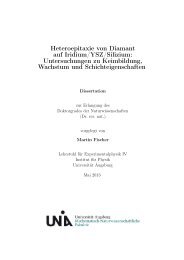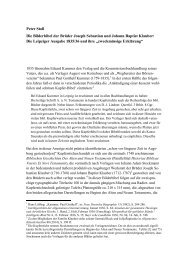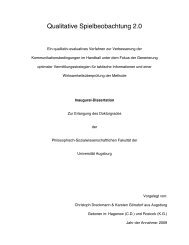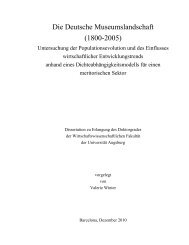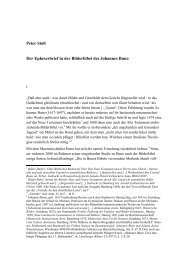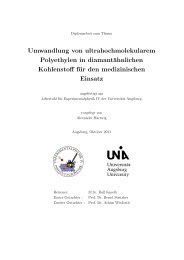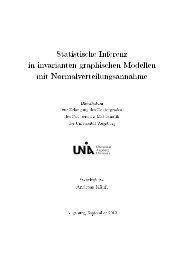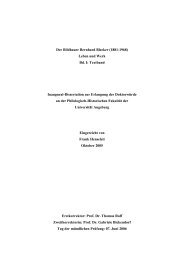An Ontology for Digital Forensics in IT Security Incidents - OPUS
An Ontology for Digital Forensics in IT Security Incidents - OPUS
An Ontology for Digital Forensics in IT Security Incidents - OPUS
You also want an ePaper? Increase the reach of your titles
YUMPU automatically turns print PDFs into web optimized ePapers that Google loves.
7.6. SPARQL 59<br />
PREFIX rdfs :< http :// www . w3 . org /2000/01/ rdf - schema #><br />
PREFIX rdf :< http :// www . w3 . org /1999/02/22 - rdf - syntax - ns #><br />
PREFIX usr :< http :// www . example . org / user #><br />
PREFIX hw :< http :// www . example . org / hardware #><br />
PREFIX fs :< http :// www . example . org / filesystem #><br />
PREFIX sw :< http :// www . example . org / software #><br />
PREFIX pro :< http :// www . example . org / process #><br />
PREFIX reg :< http :// www . example . org / registry #><br />
PREFIX <strong>for</strong> :< http :// www . example . org / <strong>for</strong>ensic #><br />
PREFIX net :< http :// www . example . org / network #><br />
PREFIX mem :< http :// www . example . org / memory #><br />
PREFIX cnt :< http :// www . w3 . org /2011/ content #><br />
PREFIX fsfn :< http :// www . example . org / filesystem / fsfilename #><br />
PREFIX base :< http :// www . example . org /><br />
List<strong>in</strong>g 7.2: SPARQL Prex<br />
ied to be the result. The DISTINCT keyword elim<strong>in</strong>ates duplicates <strong>in</strong> the<br />
result set. L<strong>in</strong>e three tells that the object that is bound to the variable ?file<br />
has to be of type fs:FSFileName. In l<strong>in</strong>e four the value of the fsfn:name<br />
property of the variable ?file is required to be the same as FILENAME.<br />
1 SELECT DISTINCT ? file<br />
2 WHERE {<br />
3 ? file rdf : type fs : FSFileName .<br />
4 ? file fsfn : name " FILENAME ".<br />
5 }<br />
List<strong>in</strong>g 7.3: Simple F<strong>in</strong>d le Query<br />
A problem with this simple query is that the full path of the le has to<br />
be specied <strong>in</strong> order to nd the FileName entry.<br />
<strong>An</strong> advanced query that solves this problem is shown <strong>in</strong> list<strong>in</strong>g 7.4. It uses<br />
regular expressions to nd les where only parts of the name are known. The<br />
query will list all les that conta<strong>in</strong> the specied str<strong>in</strong>g <strong>in</strong> the full path. What<br />
we want to get is the name of a le and a reference to the related File Name<br />
entry <strong>for</strong> further <strong>in</strong>spection of the properties of the le. The variables ?name<br />
and ?file will conta<strong>in</strong> this <strong>in</strong><strong>for</strong>mation. In l<strong>in</strong>e three the variable ?file<br />
is ensured to be of the type fs:FSFileName. L<strong>in</strong>e four b<strong>in</strong>ds the value<br />
of the fsfn:name eld of the variable ?file to the variable ?name. The<br />
fth l<strong>in</strong>e lters <strong>for</strong> the specied le name(FILENAME). The function str(a)<br />
returns the str<strong>in</strong>g representation of the variable a and regex(a,b) returns<br />
true if str<strong>in</strong>g a matches pattern b. The regex(a,b,f) function accepts<br />
additional ags. For example ag i causes case <strong>in</strong>sensitive match<strong>in</strong>g so<br />
regex("WiNdOwS","w<strong>in</strong>dows","i") returns true.




